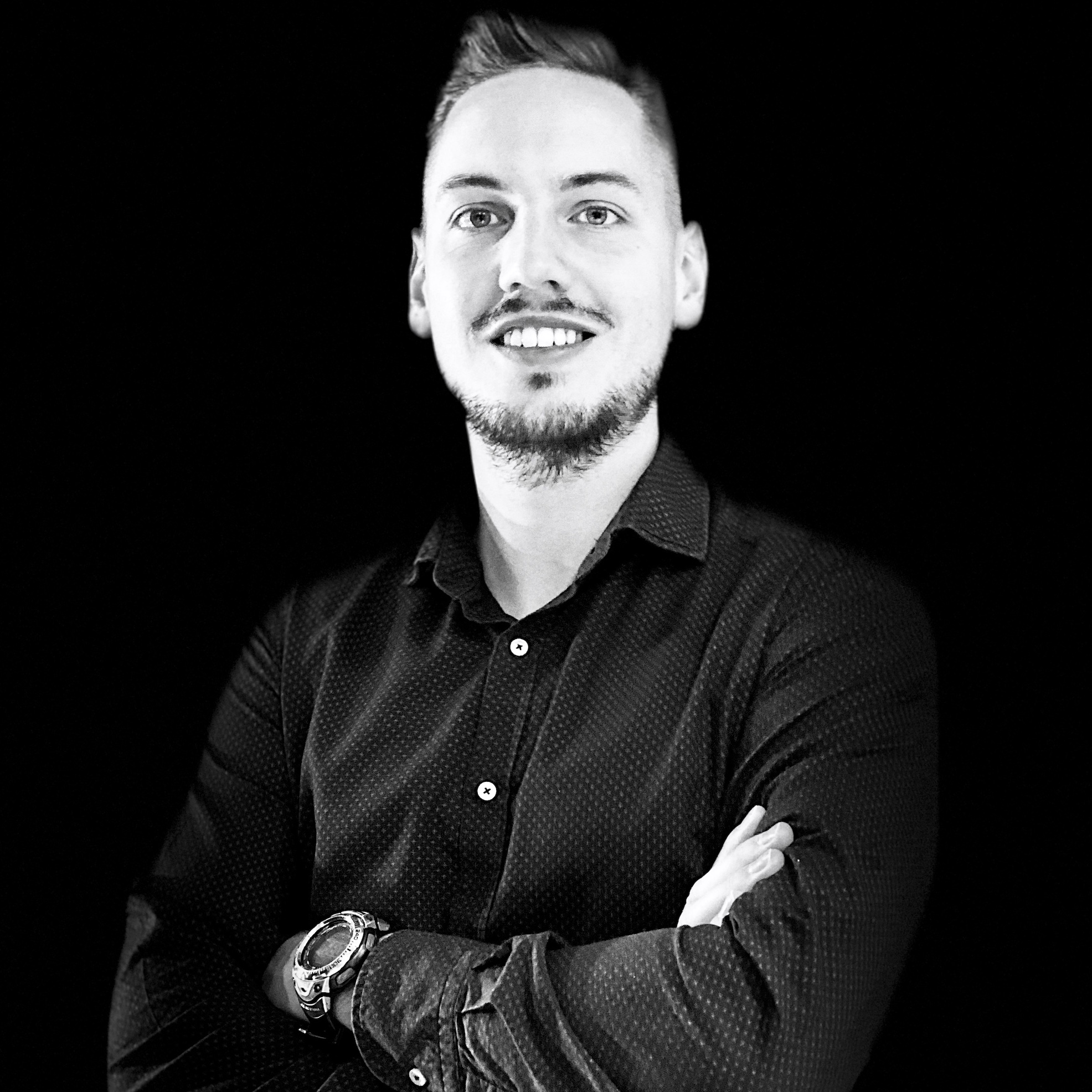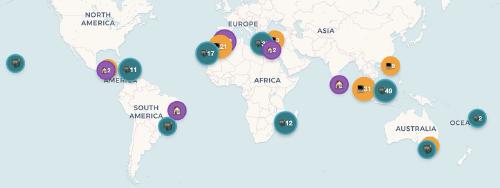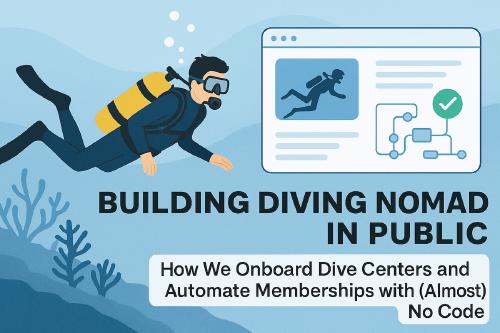At Diving Nomads, we’re building something special for digital nomads who love scuba diving. Our mission is to make it easy for them to find great places to work, live, and dive — without having to choose between beautiful dive spots and solid remote work setups.
We’re doing this in public, sharing our journey so other founders can see how a lean, automation-first approach can work in practice. Our hope: inspire other early-stage builders to skip the over-engineering and focus on delivering value early.
Why Coliving and Coworking Matter
For our community, the magic is in finding places where you can dive by day and still have a productive, supportive place to work in between dives.
That’s why we’re expanding our partner network beyond dive centers to include coliving and coworking spaces. This way, our members can plan entire trips — from where they’ll sleep and work, to where they’ll dive — in one place.
Step 1: From Dive Center to Coliving Discovery
We already have an automated outreach engine for dive centers (see Article #1 for details). So the question was: How can we apply a similar approach to coliving and coworking spaces?
Our answer:
Whenever we onboard a dive center in a new location, we flag that location for coliving/coworking partner discovery. Every night, an n8n workflow runs:
- Uses the Google Maps API to find coliving and coworking spaces nearby
- Adds them to our NocoDB tables
- Prepares them for quality filtering

Step 2: Filtering Out the Noise
Not every Google Maps result is actually relevant. We get hotels, guesthouses, and sometimes random businesses.
So we added an OpenAI-powered rating step that checks each result against criteria like:
- Community vibe
- Workspace quality
- Amenities (e.g., kitchen access, strong Wi-Fi)
- Proximity to dive centers
The AI-generated rating is stored in NocoDB so we can filter out low-quality candidates before outreach.

Step 3: Finding Contact Details
Google Maps won’t hand you an email address. That’s where the next workflow comes in:
- Visits the location’s website (if listed)
- Looks for “Contact” or “About” pages
- Extracts and stores the best contact email in NocoDB
Only once we have a valid email address and a good rating do we move the space into our outreach queue.
Step 4: Outreach — Automated but Selective
From there, the process is almost identical to our dive center outreach:
- n8n sends emails via Brevo to roughly 30 spaces per day
- Webhooks track delivery, opens, and bounces, feeding updates back into NocoDB
- Follow-up emails go out automatically after 7 days if there’s no reply
Filtering in NocoDB makes it easy for my (non-technical) partner to exclude certain cities or countries if needed.
Step 5: Keeping the Human Connection
Could we automate replies using AI? Absolutely.
Will we? No.
We want to personally connect with every space that replies, understand their vibe, and ensure they’re a good fit for our community. That’s why n8n stops automation the moment a reply is detected.
Step 6: The Kanban Flow
Just like with dive centers, NocoDB’s Kanban view helps us track partner status:
- New lead → In Contact → Confirmed
When a space becomes a partner, n8n moves their data to the partner list and removes them from future outreach.
Setup time: 15–30 minutes per workflow
Ongoing manual effort: Almost none — except for the conversations that matter.
The Tech Stack
Here’s the mix of tools powering all this:
| Component | Tool | Hosted Where |
|---|---|---|
| Automations | n8n | K8S (Hetzner) |
| Database & UI | NocoDB | K8S (Hetzner) |
| Email Delivery | Brevo | SaaS |
| Data Enrichment | OpenAI | API |
Our Kubernetes cluster (6 nodes, S3 object storage, Traefik load balancing, n8n with multiple workers) costs ~€50/month and hosts all our self-managed services.
Wrapping It Up: A Fully Automated Partner Pipeline
The result is a fully automated pipeline that continuously brings us high-quality partner leads — without drowning us in manual work.
We get to focus our human energy where it matters: building relationships, curating our network, and delivering value to members.
This allowed us to build a partner network of 120+ qualified partners within the last month with just two people doing this on the side.
Why This Is relevant for Tech Leaders
Even if you’re not building a diving community, the takeaway is universal:
- Use automation to handle the repetitive, scalable work
- Keep the human touch for the moments that require trust and nuance
- Empower non-technical team members to own and adapt key workflows
- Don’t over-engineer before you’ve validated the process
What’s Next
With both dive center and coliving/coworking outreach running in parallel, the next step is to bring it all together for members — in an interactive, searchable map. Also, as we have officially launched a week ago (🥳), I can soon also share how we run the membership platform and community.
That will probably become Article #3 (and maybe #4) in this series.
Want to learn more about the details? Just drop me a message. Happy to share more. — Tobi





Use the share button below if you liked it.
It makes me smile, when I see it.